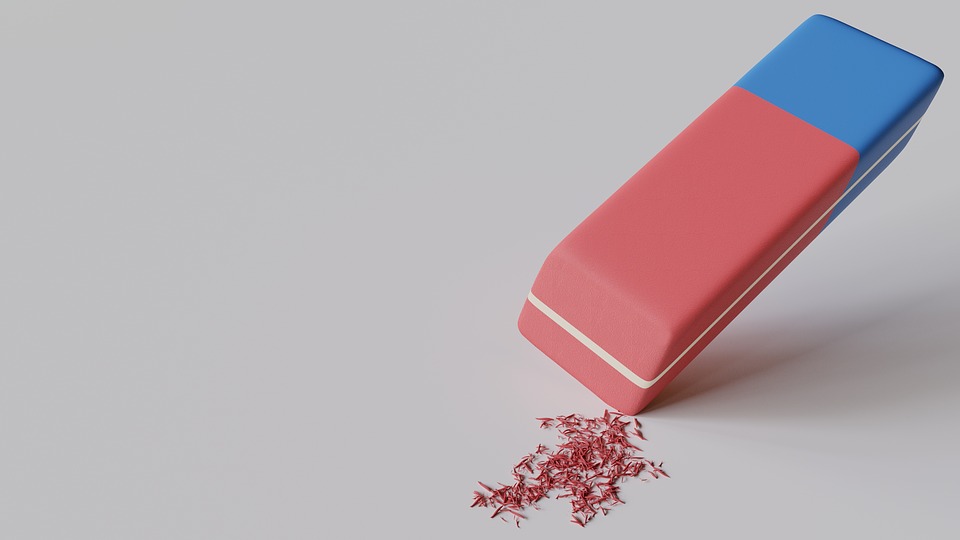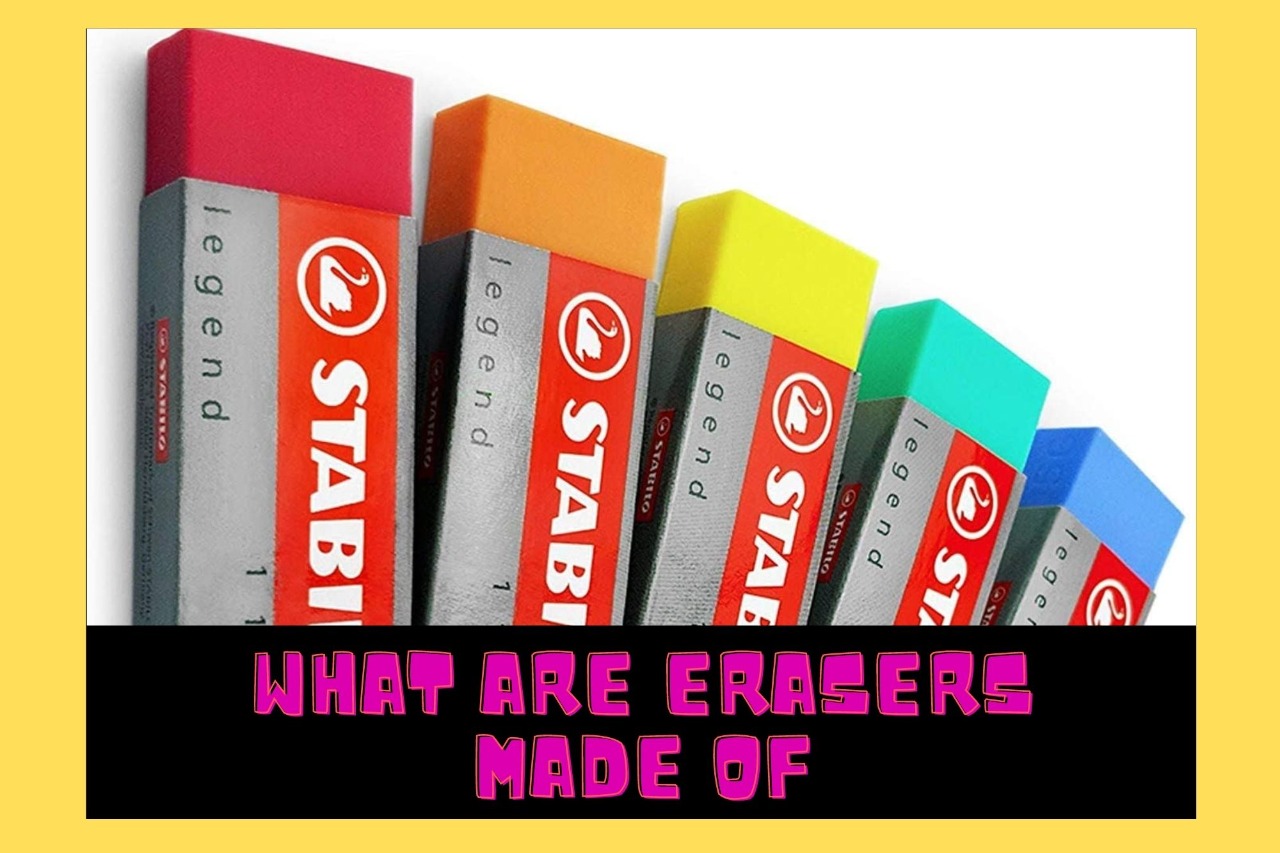An eraser is a tool that is used to erase pencil marks. In the United States and Canada, it’s called “eraser,” while in the United Kingdom, India, Ireland, South Africa, Australia, and New Zealand, it’s called “rubber.”
What Are Erasers Made Of?
High-quality erasers are generally made of vinyl, latex, or gum-like materials, while lower-cost ones are made of synthetic soy-based gum or synthetic rubber.
Erasers are available in a variety of forms, heights, colors, and fabrics.
History of Erasers That Might Interest You
Even before the invention of the eraser, people attempted to undo errors they made while writing. They used rubber or wax tablets to remove traces from the paper. They used rough material, such as sandstone or pumice, to strip ink from parchment or papyrus. Soft bread was used in Japan.
We didn’t discover until 1770 that a natural rubber derived from plants could be used as an eraser. That year, Edward Nairne, an English inventor, discovered that a piece of rubber would remove pencil marks instead of breadcrumbs. He began selling rubber (then referred to as “gum elastic” or “caoutchouc”).
Rubber is derived from the word “rubbing,” and it was granted to the item between 1770 and 1778. This kind of eraser, on the other hand, didn’t work so well: it crumbled when used and eventually died, it was too vulnerable to weather conditions, and it stank.
In 1839, inventor Charles Goodyear patented the vulcanization process of curing rubber, which solved the problem. Rubber became more resilient as a result of this operation, and the eraser became a household object.
Hymen Lipman patented a method of applying an eraser to the end of a pencil, but the patent was later revoked.
What Are The Different Kinds Of Erasers?
- Block Shape: For simple and easy use, most erasers come in block shape or attached to the pencil’s end.
- Barrel or click erasers: These are made like mechanical pens, but instead of lead, have an eraser as the heart.
- Novelty erasers: These are shaped like other toys or figurines, are often made of stiff vinyl, which is difficult to remove. Today’s erasers come in a variety of shapes and sizes.
- Art gum erasers: These are made of smooth, coarse rubber that is great for erasing vast areas without damaging the material. The only issue is that they crack (as do old erasers) and must be cleaned of their remnants. This is always accomplished using a large brush.
- Kneaded erasers, also known as “putty rubber,” are used to absorb graphite or charcoal from a rock. It does not leave behind eraser traces like an art gum eraser, and it lasts longer as a result, but it lacks its potency and resilience as fragments it erases remain within it.
Kneaded erasers may be molded into a fine point to erase small data, a wider surface to use as a sticker, or a blotter to lighten a darker graphite-covered patch. Since they distort while touching, they can’t remove wider regions.
Poster putty resembles a kneading eraser but has a significantly higher lifting power and erases the substance by lifting graphite off it. It should not smudge or harm work in progress because of the way it operates. In other ways, it functions similarly to a kneaded eraser.
- Electric erasers: It is a small electric motor with an eraser attached to the rotor. The eraser is rotated at a constant pace by the engine, causing much less disruption to the surface than erasing by hand.
- Soft vinyl erasers: Since they can stain vast areas, soft vinyl erasers are used for precise erasing. They’re used on technical sketches where they clean more effectively than regular erasers.
How Do Erasers Work?

Erasers suck up graphite crystals on the paper’s surface and remove them. Simply put, eraser molecules are stickier than paper molecules, because when the eraser is rubbed over the pencil point, the graphite sticks to the eraser rather than the paper.
Some erasers destroy the paper’s topcoat, causing it to be removed as well. The graphite crystals are absorbed by the erasers attached to pencils, leaving a trace that must be wiped out.
Manufacturing Of Erasers
The synthetic rubber is blended with pigments, palm oil, pumice, acid, and other additives at the eraser plant to change the properties of the finished product. Since synthetic rubber is normally delivered as a powder or a liquid, it is simpler to blend.
Natural rubber is usually delivered in bales and must be powdered or dissolved in a solvent before being combined.
- The sulfur in the mixture is heated, vulcanizing it and making it more solid. Extrusion is commonly used to create plugs that can be stuck to pencils. The mixture is pushed into a die in the shape of a soft solid to form a long cylinder. As the cylinder appears, it is repeatedly removed, resulting in plugs.
- Injection molding is commonly used to create flats that are not stuck to pencils. The mixture is placed into molds as a warm liquid and is allowed to cool into a solid. After that, the flats are taken out of the molds.
- The plugs are sent directly to the pencil makers. Ferrules are thin, cylindrical metal cases that bind them to pencils. For less costly pencils, ferrules are made of pure aluminum, and for more expensive pencils, painted brass is used.
Glue or small metal prongs are used to secure the ferrule to the pencil. The ferrule is inserted into the plug, which is then clamped around it.
- Flats can be labeled with the manufacturer’s name or other identifying information. This can be accomplished by stamping the eraser with an inked stamp.
Screen printing—moving an inked roller over a patterned sheet of silk or another material that hides the eraser—can also be used.
Embossing—cutting into the eraser with a sharp die—can create three-dimensional marks.
The flats are then packaged and delivered to stores in cardboard cases.
Final Verdict
Erasers are made of rubber and are a very beneficial invention for us as they help many people in writing, drawing, and other purposes and are completely safe to use, and have made life easier.
Beatrix Ainsley (Bea to her friends) is an abstract artist who was heavily inspired in her twenties by the abstract expressionist movement of the 1940s. Since then Bea has acquired three degrees in Science, Education and most importantly Fine Art. Her art works showcase exploring emotion and introspection of self. To achieve this – the use of bold, sweeping, intricate layers of color, and spontaneity of form is enhanced by reflecting on decades of life experiences. Bea has amassed a vast knowledge of art in all its forms, and hopes to pass it on with her contributions here.

